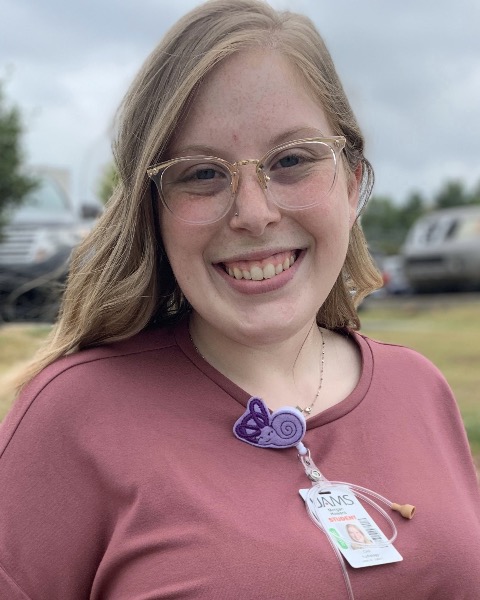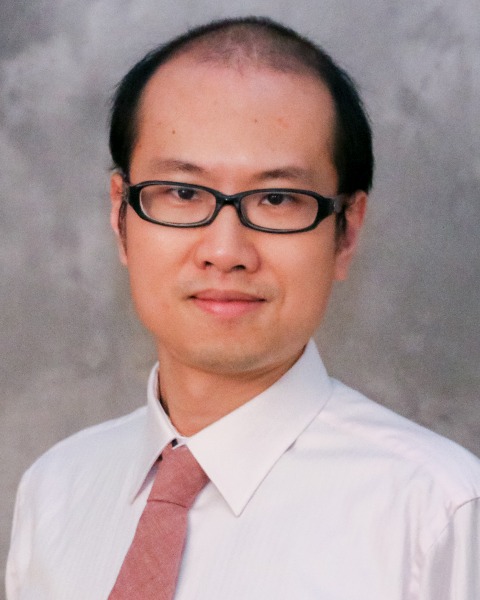Research (R)
(PP1327) Evaluation of Countertop Hearing Loop to Overcome Speech Contained by Face Mask and Barrier

Morgan P. Howard, BS
Student
University of Arkansas for Medical Sciences
Little Rock, Arkansas, United States
Samuel R. Atcherson, PhD
Professor
University of Arkansas for Medical Sciences
LITTLE ROCK, Arkansas, United States
JULIETTE STERKENS, AuD
Juliëtte Sterkens, AuD
Hearing Loss Association of America
Oshkosh, Wisconsin, United States
Justin R. Burwinkel, Au.D.
Senior Research Audiologist
Starkey
Eden Prairie, Minnesota, United States
Jingjing Xu, PhD
Research Scientist
Starkey
Eden Prairie, Minnesota, United States
Lead Presenter(s)
Contributor(s)
Summary:
Rationale: The SARS-COV-2 virus, commonly known as COVID-19 or “coronavirus” and primarily spread through respiratory droplets, was first noted in the United States in January 2020 (Holeshue et al., 2020). Though no longer required by the Centers for Disease Control and Prevention (CDC), many locations in the United States still mandate facial coverings, encourage social distancing, and utilize plexiglass barriers. Masks and social distancing create a communication barrier for all listeners, especially those with hearing deficits (Guiliani, 2020) as well as background noise (Nabelek & Pickett, 1974). Masks behave as a low-pass filter which attenuates high frequencies and were shown to attenuate up to 12 dB (Corey et al., 2020; Atcherson et al., 2021). Consonant and fricative speech sounds critical to speech recognition are negatively impacted by this type of acoustic filtering (Monson et al., 2014). Anecdotally, the addition of plexiglass barriers in many public and private places can further attenuate speech. Although hearing loop and HA telecoil show significant speech understanding improvement and preference over microphone inputs (Kochkin et al., 2014; Al Fakir et al., 2015), to our knowledge, there have been no previous studies evaluating the benefit of a countertop hearing loop with HA telecoils as a solution to overcome masks and protective barriers in the presence of background noise. With the added obstacles of the current communication climate, a hearing loop and telecoil approach should effectively reduce listening distance, increase speech recognition, and decrease listening effort.
In the current study, we are examining the impact of facial covering on speech understanding using individually programmed HAs. Specifically, this study will evaluate whether a hearing loop system (telecoil input) provides adequate benefit for hearing aid users compared to their default HA settings (microphone input) using simulated listening conditions.
Methods: Participant HA users will undergo a single research session involving: (1) self-assessment questionnaire (HHI-S), (2) a hearing aid programming for acoustic and telecoil modes, (3) speech in noise testing, and (4) subjective sound assessment questionnaire. QuickSIN sentences will be re-recorded using a talking research mannequin in the simulated environment. The speech of the talking mannequin will be recorded for each of the unobstructed, KN95 mask, plexiglass barrier, and KN95 plus plexiglass barrier conditions. The sentence recordings will then be routed through either the loudspeaker (acoustic) or hearing loop (electromagnetic) for the respective microphone and telecoil tests conditions (4x2 independent variables). The QuickSIN multi-talker babble noise will be presented from the loudspeaker at 180° azimuth. Participants will repeat two lists of sentences in each of the 4x2 conditions.
The research will be conducted in a collaboration between a Student (PI) and Audiology Faculty Mentor; a National Hearing Loop Consultant/Audiologist; and Research Audiologists/Scientists at a Hearing Aid Manufacturer. The study will also be conducted with IRB approval.
Results and
Conclusions: We hypothesize that the induction loop system will outperform acoustic delivery in each of the unobstructed, KN95 mask, plexiglass barrier, and KN95 mask plus plexiglass barrier conditions. Data collection will be completed in advance of the conference presentation.
Learning Objectives:
- Describe the benefits of countertop hearing loop versus acoustic mode for communication in noise utilizing mask and plexiglass barriers.
